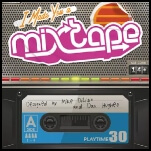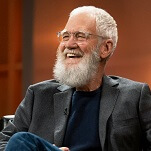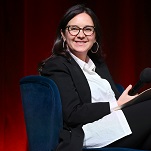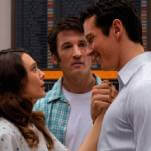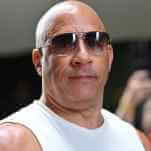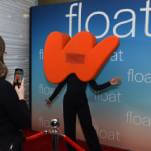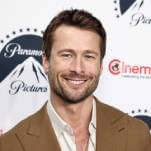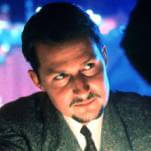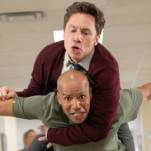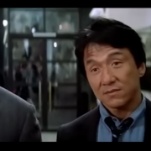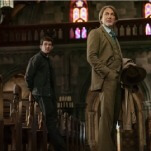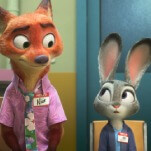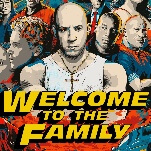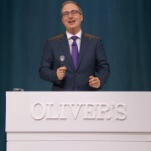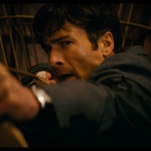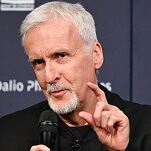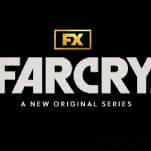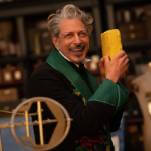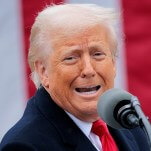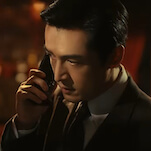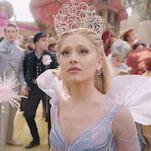Ron Howard has worked in show business since he was five years old. His style is clean, quick, and functional, a good fit for screenplays that find appealing clarity in a busy historical setting. He works with great actors and he picks material that stresses its own importance, no matter how secluded or public his characters are. His biographical films feel like big-screen fare, playing with an able, easy confidence. The problem is that none of those above strengths are conducive to rich, thorny drama, and his films are often undone by a desire to smooth complicated histories into propulsive and satisfying stories. They become, for better or worse, the quintessential examples of biographical films. Eden, Howard’s dramatized account of the Galápagos affair, exemplifies how his biopic approach is allergic to interrogating history and its players.
At the start of Eden, Dr. Friedrich Ritter (Jude Law) and his wife Dora (Vanessa Kirby) have forged a solitary life on the Galápagos Island of Floreana, but Friedrich’s goal of diagnosing the bourgeois rot of post-WWI Europe is interrupted by the Wittmer family (Daniel Brühl, Sydney Sweeney, Jonathan Tittel) and Baroness Eloise (Ana de Armas) with her male servants, who arrive to bask in the Ritters’ new paradise. Budgeted on a smaller scale than Howard’s recent output (a $50 million period drama starring A-listers is what a Ron Howard indie looks like in 2025), Eden takes a historical moment rich with ambiguity, contradiction, and mystery and takes the easy route out—a neat summary of Howard’s biopic problem.
The islanders divide into factions that represent radicalism, the family unit, and debaucherous capitalism, and what follows won’t surprise you: Aspirations and values are betrayed to satisfy hunger and grudges; jealous desire curdles into unfeeling criminality. Eden plays out with a dreary, punishing inevitability, less a story of discovery and more a prepackaged take on how humans bring their biases and vices to whatever land they try to colonize. By the end, the Wittmers are the only remaining islanders, confirming that the consolidated power of the Protestant family work ethic is the most effective means of colonialism. Howard and writer Noah Pink don’t challenge or interrogate this conclusion; because Sweeney’s Margret Wittmer is the least erratic and malicious character in the film, Eden frames her survival as an admirable, perhaps even noble victory for the formerly naïve wife. Presenting this conclusion is a choice (or absence of a choice) that reveals how the filmmakers believe their audience has engaged with the story—on the level of interpersonal drama rather than larger ideas—and it’s at the core of Howard’s conflicted history with biographical films.
The biopic form essentially argues that something cinematic can be built from our shared lives and history. It’s a simple ideal that is not exclusive to the “based on a true story” genre, but in the biopic, the mere fact that these characters actually once walked the earth implies that the story possesses inherent gravity and insight. In plenty of mainstream biopics, this self-important philosophy lingers beneath a classical score, muted political backdrop, and an insistence on important individuals. But this philosophy has ironically spawned films that pointedly do not draw out authentic insights into life, because biopics typically abide by some of the strictest dramatic and formal conventions of any Hollywood genre, favoring period detail, tortured performances, and a linear interpretation of history, even if ambitious, exciting, and compellingly imperfect biopics often slip through the cracks.
Howard’s first biographical film set a high benchmark by being his least typical. Apollo 13 depicted with delicious procedural detail the near-disaster of the Apollo 13 lunar mission after an explosion depleted their oxygen and knocked them off course. Starring Tom Hanks as astronaut Jim Lovell alongside a fleet of stern, clean-cut ’90s character actors, the 1995 film is an artifact of the End Of History, when looking back at the perseverance of American exceptionalism was especially attractive.
Apollo 13 depicts a country that had started to cool on the novelty and majesty of space exploration. This sense of cultural disintegration is underlined by Lovell’s daughter lamenting the breakup of The Beatles as her father drifts in space. In Howard’s film, the legacy of a national achievement (the Moon landing) is under threat after only nine months. Even after NASA claimed victory in the space race, they still had to rely on no-win scenarios, impractical workarounds, and absurdly sharp coordination. But fear not, Apollo 13 argues: America’s legacy is safe. The film takes a moment of perceived victory in the Cold War and looks at how difficult maintaining that national prowess was in the immediate aftermath; a blunt metaphor for the American self-image reassuring itself in the wake of Soviet collapse.
What complicates Apollo 13‘s condensed, satisfied reading of history is how Howard emphasizes the peril and the isolated characters on the brink of grief. Onboard the shuttle and inside ground control, Howard shoots with anxious zooms, extreme close-ups, and focus pulls, pushing an extreme, panicked scrutiny on data readouts and relayed instructions. Howard cranks up the suspense, making the eventual message one of American perseverance; it’s his way of earning the film’s final congratulatory notes, but it also sets the tone for Howard’s biopics to come—films where he saw his job as selling the perspective of the material rather than refining or challenging it.
This is the policy behind two superficial Howard films scripted by Peter Morgan—Frost/Nixon and Rush—and the results are fittingly second-rate. Both are extended cinematic matches: Frost/Nixon reenacts the confrontational televised interviews between frothy English presenter David Frost (Michael Sheen) and former president Richard Nixon (Frank Langella), climaxing with Nixon’s notorious “When the President does it, that means it’s not illegal” declaration; Rush tracks the Formula One rivalry between English playboy James Hunt (Chris Hemsworth) and the severe Austrian Niki Lauda (Daniel Brühl). Both films are attractive, 1970s-set period pieces driven by a clearly defined dichotomy, and Howard animates the settings of the most direct conflict.
Frost and Nixon’s interviews are lit with bright studio lights set up in an eerily cozy living room. There’s a visible glow of makeup on each actor’s face, and there’s an edgy vividness to the expressions and candor of the two interlocutors that, the film suggests, is lost when filtered through the fuzzy, diffused studio cameras. There’s no score, and the actors’ words ring out in the tense, respectful silence of the TV shoot. The upper half of their bodies fill the frame, drawing our attention to how intentionally Sheen moves his upper body as he speaks, or how Langella uses his hands like weapons to deflect and attack in tune with his roughly accented speech. When Frost asks a hardball question about U.S. war crimes, the camera cuts from Nixon’s response back to Frost. But before Frost can get a word in, Howard whip-pans back to Nixon as he continues on the offensive. Within the strict shot-reverse-shot style of the TV interview, Howard still finds ways to accelerate and intensify the drama.
But despite some of this formal energy, Frost/Nixon is not interested in interrogating Nixonian ideology or the consequences of his lack of accountability. The film is far more interested in cultural commentary than political. Frost/Nixon stresses its own importance as a historical document, an account of the media evolving into an unsuspecting weapon against figures of corruption. The film takes the somber and dubious position that Frost’s television interview established a new battleground for serious political accountability, making a whole character arc from how the usually fanciful Frost had to grow up for his match against American corruption incarnate. Howard’s interview scenes are about investing in the drama. Who is going to come out on top? Can an unsuspecting new media figure one-up the most traditional symbol of American power? At points, Frost/Nixon plays more like a sports movie than Rush. It’s an easy way to avoid questioning how effective the interviews were, or noting that the media’s willingness to challenge authority had drastically reduced in the years between the interviews and the film’s release. Howard is far more drawn to the simple cinematic excitement in Morgan’s script.
As a racing rivalry movie, Rush is more visceral and cinematic than Frost/Nixon, but it’s also another step towards totally dulling the rigor of Howard’s biopics. It was also a step back from Howard’s previous sports biopic, the simple, sentimental underdog boxing drama Cinderella Man. Rush offers a freer canvas than Frost/Nixon to express his big emotions—ego, indignity, fragility—of Hunt and Lauda, but the audience is also much less familiar with their mannerisms and speech than those of someone like Nixon, whose personality and legacy come across in his name alone. In Rush, Howard and Morgan commit to woefully broad caricatures that underlines at every opportunity how Hunt and Lauda were defined by a simple chalk-and-cheese dynamic. Rush doesn’t have much to say about Formula 1 or the business behind 1970s sports, instead flimsily insisting that polar-opposite rivalries are essential to sporting prowess. Under any scrutiny, this conclusion falls apart, because the film embellished the rivalry so it would sizzle and pop to Howard’s biographical standards. You can’t make intelligent films about history if you restrict yourself to the ripples made in mass culture.
Even before the closing credits roll footage of the real Hunt and Lauda getting along perfectly fine, the contrasts in their personalities smacks of artificiality, and the film only gets at something compelling in its final race, where Lauda and Hunt compete against their own death drives, their cars screaming through torrential rain. Howard conjures something strikingly anticlimactic but atmospheric by zeroing in on what it feels like for each driver to be lost in their own machine—and by extension, their own minds. If Frost/Nixon and Rush feel convincing or electric, it’s a result of how stylistically Howard interprets the material; the films’ unwillingness to approach their commentary with a similar liveliness and invention points to the limits of Howard’s vision. The same caricatures and hand-wavey conclusions are central to Eden, but the lack of celebrity subjects and exciting cinematic flourishes make their emptiness stand out more.
In his biopic works that’re in a similar vein of straight drama, A Beautiful Mind and Hillbilly Elegy (which represent the zenith and nadir of Howard’s cultural reception, even if they’re not that far apart in quality), Howard displays none of the stylistic ingenuity that intermittently makes his other biographical work arresting. As a result, the films are unconvincing and excruciating melodramas: In A Beautiful Mind, Russell Crowe plays mathematician John Nash, whose genius is upset by schizophrenia; in Hillbilly Elegy, Gabriel Basso and Owen Asztalos play the older and younger J.D. Vance, who reflects on and pathologizes his impoverished Appalachian childhood.
In these films, those pushed to America’s margins (who suffer from mental illness, generational trauma, or addiction) become caricatures regarded with the extremes of pity or rejection, and Howard credulously stages the cloying, condescending tones of Akiva Goldsman and Vanessa Taylor’s respective screenplay adaptations, never pushing back against their sources’ leaden, constructed perspective on American suffering. The tension in these films is interpersonal—gulfs in understanding between loved ones, the fear of your home life caving in—and Howard can’t rely on environmental perils to bolster the drama. These biopics ossify in front of the audience as these sluggish treatments of personal and social tension conform to obvious and simplified interpretations of the world.
And yet, before Eden, Howard mounted his most successful (and most Apollo 13-like) biographical film in nearly 30 years with the Thai cave rescue drama Thirteen Lives. It’s easy to see why Howard found the material compelling and why that excitement translates onto the screen: The film confronts its skilled but ordinary characters with seemingly insurmountable odds and watches them incrementally overcome them with ability and courage. But crucially, the 2018 setting of the film and the ripped-from-the-headlines topicality meant that William Nicholson’s script is interested in capturing a current event rather than interpreting a historical moment. Thirteen Lives succeeds where Howard’s other biopics fail not just because it plays to his more meticulous, problem-solving strengths as a storyteller, but because the film is not actually looking into the past. But where that film took viewers just four years back, Eden travels almost 100, and the film’s dulled commentary proves that Howard’s impulses around these films remain unchallenged.
Howard is not a screenwriter; he hasn’t written a film since his directorial debut, Grand Theft Auto, in 1977. But his career of biopics with credulous, almost reverential approaches to the one-note pasts they put on display indicates that Howard believes that audiences only want historical films that can be easily and immediately digested. Howard’s failure as a biographical filmmaker is his dearth of curiosity; his success is his ability to make the exciting parts of these events actually feel exciting, as if that surge of emotion and tension should convince us to accept this version of real events, however shallow and didactic. History is not a living, reactive force in Howard’s biopics—what is to be taken from the past is decided on and fixed in place before he gets to work. The tiresome entropy of watching Eden‘s new frontier crumble is a foregone conclusion, because it’s a product of Howard’s stupefying policy of making movies with the same take on the past: There might be exciting ways to witness these historical moments, but there must be an easy way to understand them.



